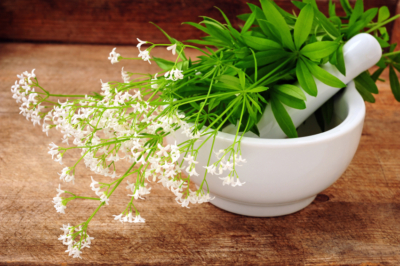Since woodruff occurs as a flavoring in many traditional foods, it is obviously edible in principle. However, regular consumption is also quite cautious, otherwise it may cause damage to health.

Contents
The use of woodruff in food
During the last hundred years, woodruff has become known as a flavoring mainly through the following products:
May punch or also woodruff punch
- Berliner Weisse
- Woodruff soda
- Woodruff lemonade
Its characteristic taste, together with a certain acidity, has a refreshing and invigorating effect in certain foods and beverages. In addition, woodruff was and is also used as a natural remedy for headaches, it is also considered digestive and antispasmodic. While in the past many drinks and sweets for children were also flavored with real woodruff, today these flavors are due to an artificially produced flavor. This is because the use of real woodruff in these products has been banned in Europe since 1974 due to the coumarin it contains.
Dangers when consuming woodruff
In principle, woodruff is more beneficial to health than harmful when used correctly and in sparing doses. However, the ban on its use in products for children is due to its often very regular consumption and possible damage to health. For example, an overdose of coumarin from woodruff can not only cause drowsiness and headaches, but also lead to lasting damage to the liver.
The correct procedure for harvesting woodruff
The plant known as woodruff, Galium odoratum, is most often collected from natural stands in the forest, but sometimes it is deliberately grown in shady places in the garden. Woodruff blooms between about mid-April and mid-May, depending on the region, and reaches its strongest aroma shortly before that.
Tips & tricks
Woodruff is also edible as a seasoning herb in salads and desserts, but mostly the aroma is obtained by soaking the briefly wilted stems in some liquid.

